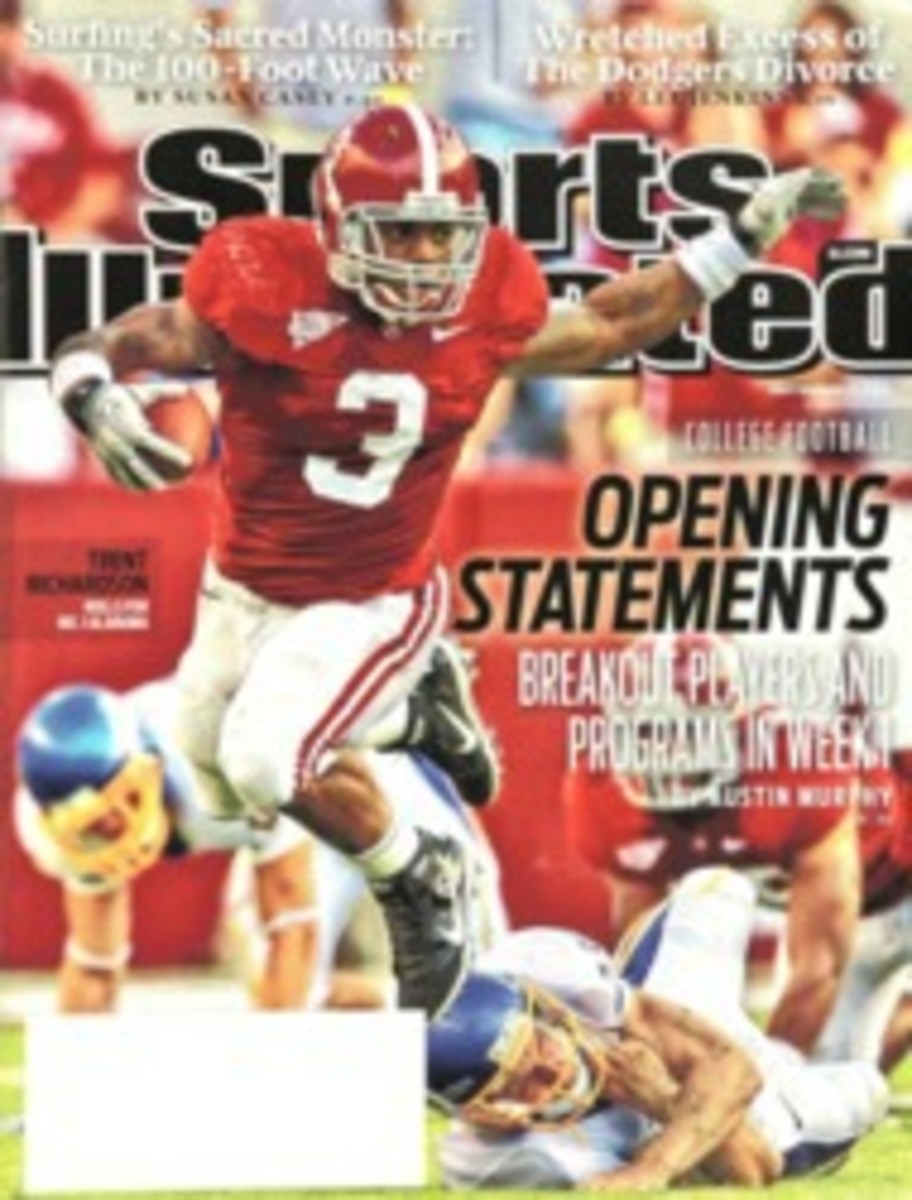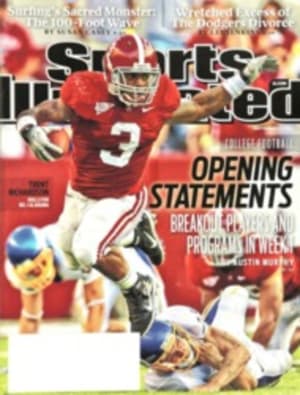
Present at The Creation
The pudgy little guy and his pal got off the streetcar on Commonwealth Ave. and headed toward the lights. At the ticket window they each plunked down $2.50, then took seats in the end zone. It was Sept. 9, 1960, they were nine years old and, to borrow a concept that the presidential candidate from their home state had introduced two months earlier at his party's convention, they stood on the edge of a new football frontier. That evening, at recently renovated Boston University Field (the former Braves Field), the American Football League would be inaugurated when the Boston Patriots faced the Denver Broncos.
One of those boys was Chris Henes. "What sticks in my mind," recalls Chris, today an attorney, "is that the lights appeared to be very bright." The other was me. At the time I cared not a whit that I was witnessing history. I just wanted the Patriots to slaughter the Broncos. As SI reported the following week, "Boston was a 16-point favorite, and everything was in readiness for another Boston massacre: [the field] was decked in red, white and blue, ushers wore tri-cornered hats and scarlet jackets, and a horseman played Paul Revere. As 21,597 fans sat in eager anticipation, Joe Foss, the new league's commissioner, enthused. 'Wonderful crowd,' he said."
A few hours later that throng filed out deflated after Denver's 13--10 win. The key play had been a scintillating third-quarter 76-yard punt return by the Broncos' Gene Mingo. I remember few of the particulars, though I do recall the Denver players' dopey-looking vertical-striped socks. Neither Chris nor I even know if we were behind the goalposts through which the Patriots' Gino Cappelletti scored the league's initial points on a first-quarter field goal. The details made less of an impression on me than what I had seen at Fenway Park 40 days before: Ted Williams hitting one of his final home runs.
But from the perspective of a half century, and with the Vikings and the Saints preparing to kick off the 2010 NFL season with another Sept. 9 night game, that ragtag Denver-Boston tussle takes on more than mere historical significance: It enables us to measure not only how pro football has grown, but also what it may have lost.
First, those lights. That game and the other six Patriots home games that season were played on Friday evenings because Boston owner Billy Sullivan knew that on Sunday afternoons most area fans preferred to watch the telecasts of the New York Giants. (The AFL opener—the revolution!—was not televised.) That position of weakness, though, may have prefigured a strength. The 1960s was the decade during which pro football surpassed baseball as America's No. 1 sport, but it wasn't until the advent of Monday Night Football in 1970 that the NFL, having entered prime time, became a true watercooler topic. Moreover, Mingo's punt return was the kind of crowd-pleasing play that would put the AFL on the map. Its breezy, pass-happy style perfected by Mad Men such as John Hadl, Lance Alworth, Daryle Lamonica and Joe Namath was in tune with the go-go '60s and would help force a merger with the NFL in 1966.
Second, the numbers. "When we went down along the end zone after the game when players were heading to the field house, they seemed to be giants as we were standing near them," Chris recalls. "Looking at the program 50 years later, they appear to have been very average in size." Average is relative, but no player on either roster topped Denver defensive lineman Bud McFadin's listed 280 pounds. The figure that sticks in my mind, though, is the ticket price. Of course, the economics of sports have changed completely in a half century. Still, the ability of a nine-year-old to get into a game so cheaply and to walk right up to his heroes and pat them on the back should not be discounted. Unless parents are willing to shell out thousands for personal seat licenses and hundreds for seats, kids today don't have that opportunity, one that made Chris and me fans for life. Will playing Madden '11 or '21 or '31 create the same devotion in the priced-out generation?
Finally, that humble, rough-hewn beginning is in marked contrast to the corporate nature of today's game. That was brought home last week when I read a story in the advertising section of The New York Times about the "official air freshener of the NFL." I had to wonder what the other 21,596 at BU 50 years ago would have thought of that promotional deal. (Loonier than ... a man on the moon!) At long last, has the sport begun to stray too far from the integrity of its concept?
Brand extensions, however, were not among the pudgy little guy's concerns as he left the park after the first loss. Disappointed though he was, that evening had decided it for him: He wanted to spend the rest of his life watching games. He still does.
Now on SI.com
Peter King's Monday Morning Quarterback and Friday Gameplan, at SI.com/king
The figure that sticks in my mind is THE TICKET PRICE. The ability of a nine-year-old to get into a game cheaply should not be discounted.
ILLUSTRATION
ILLUSTRATION BY DARROW

